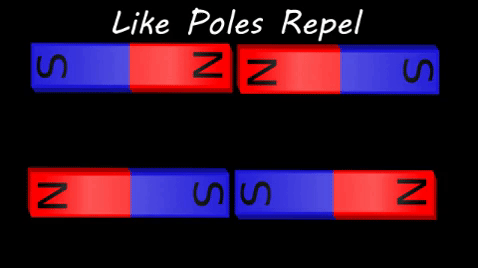Difference between revisions of "Magnetism"
(→About Magnetism) |
|||
| Line 36: | Line 36: | ||
===About Magnetism=== | ===About Magnetism=== | ||
| + | : [[Magnetism]] is a [[force]] so it is [[Measure|measured]] in [[Newton]]s. | ||
: [[Magnetism]] is a [[Non-contact Force|non-contact force]] because it can act without [[object]]s touching. | : [[Magnetism]] is a [[Non-contact Force|non-contact force]] because it can act without [[object]]s touching. | ||
: [[Magnet]]s produce a [[Magnetic Field|magnetic field]]. If [[Iron]],[[Cobalt]] or [[Nickel]] are in that [[Magnetic Field|magnetic field]] they will be [[attract|attracted]] to the [[magnet]]. | : [[Magnet]]s produce a [[Magnetic Field|magnetic field]]. If [[Iron]],[[Cobalt]] or [[Nickel]] are in that [[Magnetic Field|magnetic field]] they will be [[attract|attracted]] to the [[magnet]]. | ||
Revision as of 12:31, 15 October 2018
Contents
Key Stage 2
Meaning
Magnetism is a force that causes magnets to be attracted or repelled from one another.
- Noun: Magnetism
About Magnetism
- Magnetism is a non-contact force.
- Magnetism only affects certain materials:
- Iron
- Steel
- Cobalt
- Nickel
| Magnetism only affects these metals. |
- Magnetism can be attractive or repulsive.
| Two magnets facing North-North will repel each other and two magnets facing South-South will repel each other. |
| Two magnets facing North-South will attract each other. |
Key Stage 3
Meaning
Magnetism is a force that affects magnetic objects in a magnetic field.
About Magnetism
- Magnetism is a force so it is measured in Newtons.
- Magnetism is a non-contact force because it can act without objects touching.
- Magnets produce a magnetic field. If Iron,Cobalt or Nickel are in that magnetic field they will be attracted to the magnet.
| This diagram that shows the magnetic field around a magnet. |



